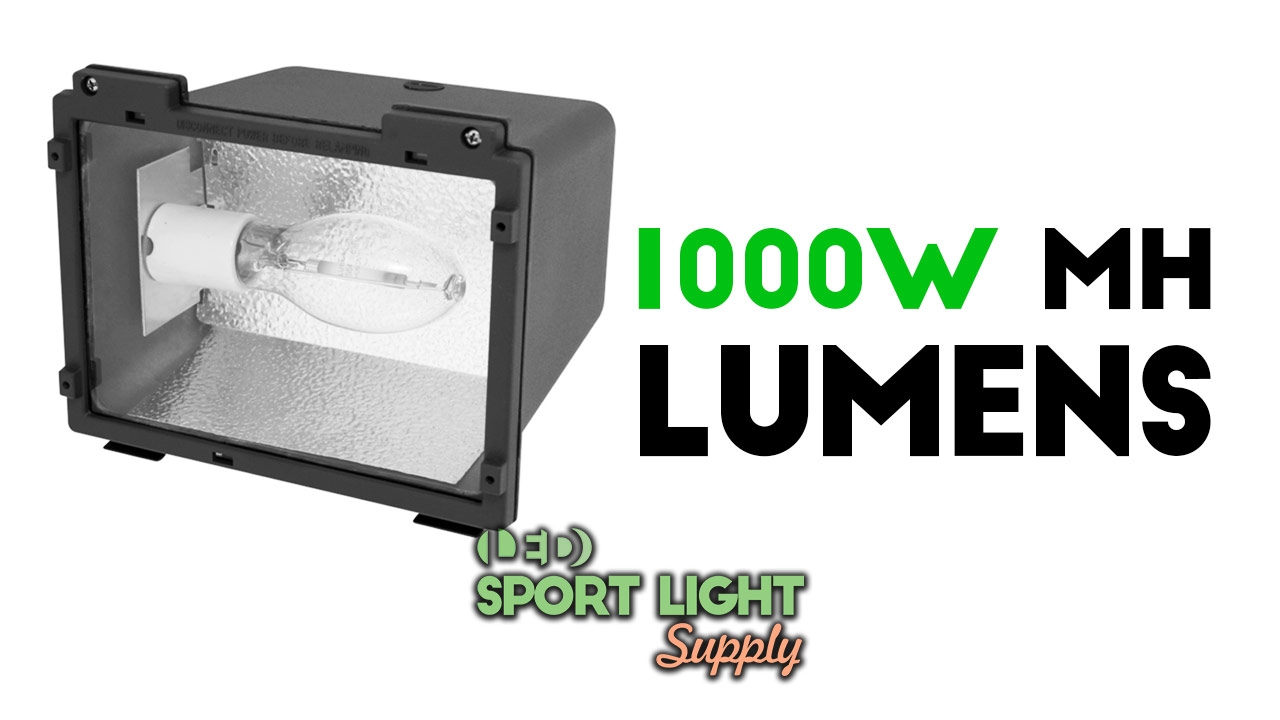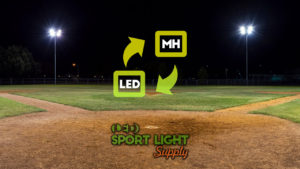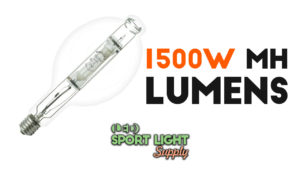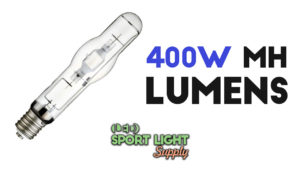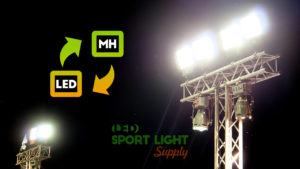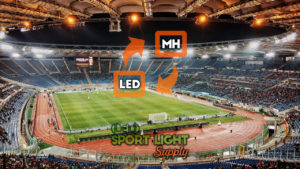Lumens VS Watt – what are they?
Among the most widespread units of measurement of lighting, we find the lumen, which measures the luminous flux. In brief, it indicates the amount of light emitted by a light source and visible to the human eye. In the spec sheet of any lamp, lumens are shown with a numeric value ending the initials lm.
The watt (W) is a measure of the power of the LED or, more generally, of an electrical component. Its value depends on the voltage to which it is subjected and the intensity of the current. Without going into too many technical details, watts allow you to evaluate the consumption of any electrical device.
A 1000W metal halide lamp generates a different lumen output than a 1000W LED light. To be precise, various light sources emit light by exploiting varying materials or techs. So, two lamps with the same wattage do not necessarily equal the same lumen output.
Why do we need to know the 1000W metal halide lumens?
1. For LED replacement
First of all, the lumen output gives us a clear idea of the light intensity. So, the lumen amount makes it easier for you to find an equivalent LED replacement for any energy-consuming HID lamp.
Lumens help select the equivalent watts of LED to replace 1000 watts of metal halide lights. As you now know, we cannot use 1000W LED lights to replace 1000W metal halide because 1000W LED is much brighter than 1000W metal halide.
The luminous efficiency of LED lights is way higher than the MH one. More importantly, this is great news because it means that you can replace all the old HID lights and save on your energy bill!
2. Help compare the cost of LED lights
Once you have the 1000 watts MH lumen output, you will find several LED equivalent products. Amongst them, the most cost-competitive one will provide the best deal.
Each person has different needs. Some prefer a LED retrofit with the same screw base to use the same housing or lamp holder. But other customers might be ok with purchasing a less expensive product to replace the old 1000W lamp. Even if they have to use a different wall light bracket. Or they might want to change the latter in the first place for decor reasons.
Professional grow lights can be pricey. The same goes for sports arena high bay LED lights. Whenever you use the metal halide lumens for comparison, it is easier to get a better bang for your bucks!
Average 1000 watts metal halide lumens
In general, the luminous efficacy of most MH lamps varies from 65 to 80 lumens per watt. The variation depends on the product quality as well as the using time and other factors.
When we suppose that the lamp consumes exactly 1000 watts, we are considering a brand-new HID bulb. In fact, the luminous efficiency decreases over time. Usually, after less than halfway through its suggested life span, the lumen maintenance drops significantly. That is when the MH bulb begins to die.
Unlike LED lights, which are long-lasting, 1000 watt metal halide bulbs last between 10,000 and 25,000 hours. That is, if we are talking about mid-market products. So, the average 1000W MH lumens would be 1000 x 65 to 80 = 65,000 to 80,000 lumens.
How to replace 1000 watts metal halide lights?
The luminous efficacy of available LED lights ranges from 130 to 170 lumens per watt. Once again, in the mid-product range. So, here is what you might expect to pay in terms of power consumption. In other words, here is the answer to the question of how many watts the 1000 watt MH LED equivalent light will consume.
Reasonably, we can calculate 65,000/170 = 382 watts and 80,000/130 = 615 watts. Hence, a 382 to 615 watt LED light is enough to replace a 1000W metal halide.
To explain, I took the min and max MH lumen output and divided it by the LED lumen per watt ratios. Different manufacturers produce varying LED lights. So, look out for the best and more efficient LED light on the market. Or consult an expert for the best results.
What determines the lumens output of metal halide lights?
1. Wattage
You can find several MH lamps with a wattage ranging from 200 and 18,000 watts. As you know, wattage helps you understand how much electricity the 1000W MH lamp consumes.
Closely related to wattage is amperage. In fact, the product of voltage and amperage is what gives us the watt value. The higher the ampere value (amperage), the brightest the luminous flux. And by the same token, as the ampere value rises, the life span decreases.
Voltage variations can also influence the lumen output. In short, wattage describes the power consumption. But at the same time, you should read the spec sheet to find out other useful values that might help you understand how the MH light performs.
2. Design of arc tube
The arc tube is the heart of HID lamps. Basically, it is a discharge tube in translucent ceramic material (polycrystalline aluminum) or glass. Inside it, there are metal iodides (sodium, sodium scandium, or even rare earth iodides) and an adequate ignition gas percentage.
The arc tube is the main cause of the metal halide luminous efficiency as CRI. That is, the Color Rendering Index (how realistically the illuminated object appears in comparison with daylight). Plus, the design of the arc tube determines the heat loss.
Heat is one of the most crucial variables when it comes to emitting light. To put it simply, light emission is a conversion of electricity into visible wavelengths. But depending on the tech and method, most of the energy can turn into heat. The better the arch tube design, the lesser the heat. Consequently, with a lower heat emission, the lumen output increases.
3. Using time
As previously mentioned, the longer you use a metal halide bulb, the lower the luminous output. Overheat and the internal gas pressure are the two most relevant factors when it comes to aging.
As you leave the MH on, the gas pressure increases. At the same time, the voltage demand rises. One day, the internal gas pressure becomes so strong that the magnetic or electronic ballast cannot provide the voltage necessary to keep the light on.
When this series of events happen, the metal halide lumens decrease. Basically, the more you keep the HID light on, the less bright it gets. That is also the reason why almost every manufacturer says that the MH light keeps its lumen output at 90% after the first 5,000 hours. Shortly after that period, the lumen output begins to drop consistently and inevitably.

